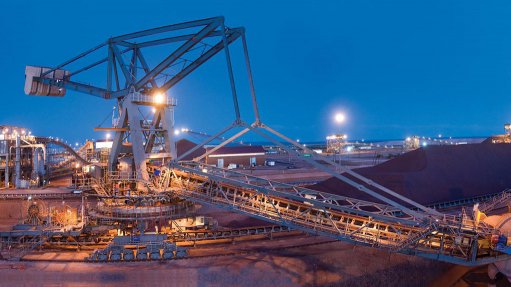
QUALITY CONTROL Low quality imports are one the most pertinent challenges that BEKA Schréder faces when working in Africa
Many African mines are opting for solar-powered perimeter lighting so that their security is not compromised during power failures, says luminaires manufacturer BEKA Schréder export manager Paulo Mamede.
“Demand also depends on the mineral being mined, with security being stricter at gold and diamond mines, compared with that of coal and manganese mines.”
The company has an extensive portfolio of solar lights for all mining applications, says BEKA Schréder marketing and segment development manager Grant Combrink.
“We are encouraging mines to include solar lighting in their specifications, especially for street and flood lighting purposes. Our off-grid options offer sustainable solutions for mines with grid-power problems while providing light where it is needed to continue productively and safely.”
However, as high-intensity discharge (HID) lighting is becoming obsolete and increasingly difficult and costly to source, the transition to energy-saving, light-emitting diodes (LEDs) remains the main driver of orders placed by African mining operations.
While lighting is a small portion of a mine’s power consumption, energy saving is still an important consideration, as mines are expensive to operate and require a lot of lighting, says Mamede.
BEKA Schréder’s Lednova industrial LED bulkhead is currently one of the mainstays of the company’s African mining market. However, as the company offers a broad-based solution for mining, it has had significant success across the board as mines replace ageing traditional technology, says Mamede, highlighting that the company is highly active in sub-Saharan Africa.
“We are not only involved in supplying LED technologies but are also pivotal in informing and assisting clients in identifying the right solutions for their applications.”
Failing HID lighting not only contributes to an increase in maintenance and energy costs but also dangerous working environments.
“You struggle to get quality lamps, so the maintenance component becomes a significant challenge,” adds Mamede.
Business in Africa
Low quality imports are one the most pertinent challenges that BEKA Schréder faces when working in Africa.
“There are many inferior luminaires that may look the part, but that does not mean that they can act the part. Therefore, motivating a premium product with a higher price tag to a client is probably one of our biggest challenges. Mines do tend to stick to specifications, but this remains something we have to work on,” explains Mamede.
While relying on its reputable brand name, BEKA Schréder also offers its clients training on international lighting requirements and the pitfalls of cheaper products.
Mamede says proper planning is crucial when transporting goods into Africa, whereby logistics are consolidated and different means of transportation are considered, as “it is becoming increasingly challenging in today’s world to not only move a container globally but also move it on the continent”.
He states that experience and innovation are key to succeeding in these challenging environments.
While power supply is certainly an issue in many parts of Africa, the electricity supplied to mines on the continent is generally secure. Nonetheless, emergency lighting supplied to mines needs to be self-sustained for a certain amount of time, depending on requirements.
Ensuring adequate lighting in harsh mining conditions is essential to avoid safety-related issues, as poor lighting is conducive to accidents, and to improve efficiencies and boost productivity by allowing for 24-hour operation.
“There is nothing more debilitating for mines than not being able to operate continuously. Any interruption to production is costly,” adds Mamede.
While too little light is concerning, so is too much light, as debilitating glare is just as dangerous as no visibility.
Mamede says that, when developing products for mines, ensuring best performance is crucial; therefore, lighting must perform in extremely harsh environments amid dust, humidity, corrosive conditions, extreme temperatures and vibrations.
To ensure the durability and longevity of its products in these conditions, BEKA Schréder uses the best possible materials and components available and undertakes its own research and development, he notes.
“We expose our products to aggressive impact, corrosion, water and dust ingress and vibration testing, simulating the harsh operating environments as best we can in our laboratories to ensure their effective performance at mining operations.”
While the longevity of its luminaires depends on the operating environment, BEKA Schréder’s luminaires are guaranteed for up to 100 000 hours, depending on usage and other factors.
Ensuring low maintenance requirements is also vital as downtime and the need for teams to frequently engage faulty lighting systems, is costly.
“Mining companies are in the mining business and not that of maintaining lights,” emphasises Mamede.